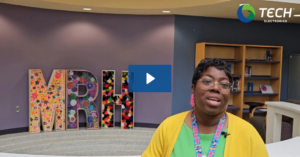By: Joe Dorsey, Director of Professional Audio Visual Technologies
After several months, the coronavirus crisis is beginning to stabilize, and society is making strides toward reopening society. But as we work toward this goal, it is clear that the next phase is less a return to business as usual, and more of a temporary “new normal”.
What exactly does “normal” look like after an event of this magnitude? Some industries are bound to face more disruption than others, and schools in particular may be looking at a long road back. The close-quarters nature of classrooms makes represents a potential risk factor, and authorities are planning accordingly.
Colorado Governor Jared Polis discussed a plan for a “hybrid environment” with “less interactions”, and potentially returning completely to remote learning in the event of future outbreaks. Furthermore, according to USA Today, roughly 1 in 5 K-12 teachers say they are unlikely to return to school in the fall, and about 30% of parents say they are “very likely” to pursue at-home learning options.
Instructors and administrators have done a remarkable job of adjusting on the fly to the difficulties of the pandemic. But with more challenges ahead, school districts would do well to consider adding to or upgrading their suite of distance learning solutions.
A Fully Integrated Remote Classroom
Online videos, readings and worksheets can go a long way in a pinch, but as many schools concluded during the spring semester, students need face-time with instructors and a collaborative learning environment. As such, video conferencing is the foundation of a top-of-the-line distance learning format.
Several video conferencing applications like Zoom made premium features free to educators during the initial wave of the pandemic, enabling them to improvise solutions. In the long term, however, schools can empower teachers by leveraging those collaboration tools as a part of a full-fledged distance learning system.
Many schools are considering having instructors return to classrooms, while students remain remote. In this scenario, educators could harness state-of-the-art AV over IP (AVoIP) technology and native integration with collaboration platforms to broadcast lectures in high definition.
The complexity of solutions varies, ranging from simple setups featuring a single camera, recording setup and broadcast tools, to much more robust options. If an instructor needs live annotation, illustration tools, or cameras that dynamically pan, zoom and focus on subjects, a custom solution can be built.
Helpfully, these platforms can often integrate with third party Student Information Systems SIS and Learning Management Systems LMS. This allows them to be seamlessly built into a holistic distance-learning program, from administering curriculum to tracking attendance and grading.
Creative Solutions to Unique Challenges
To limit interaction and potential exposure, as well as accommodate families who are not prepared to send their children back, some schools are considering a format in which some students attend in person while others stay remote. How can instructors offer a consistent experience to all students under these conditions?
Traditionally, a “hybrid classroom” refers to a class format in which curriculum is divided between in-person sessions and independently driven distance learning. But what about a format similar to a “hybrid meeting” in the business world, in which some students would attend in person, and some would be teleconferenced in?
In much the same way that integrators offer Conference Room as a Service bundles, these AVoIP technologies can be applied in a classroom setting as well.
Schools can equip their classrooms with presentation-ready setups – controlled by a simple touch-screen interface – which integrate with collaboration platforms, allowing remote students to video conference into their class. Remote students can view lectures, contribute to discussions, and even present projects using their own devices at home.
These technologies do not merely add value as a short-term remote access solution either; an integrated classroom AV bundle can revolutionize a classroom environment in the long term as well.
In an era of endless screens and short attention spans, these systems provide ease of use in helping instructors create a seamless multimedia experience perfectly suited to the learning styles of today’s students. Better still, classroom bundles deliver this outcome for an affordable monthly fee; no hardware purchases or expensive upgrades required.
A Partner for Re-Entry and Beyond
At this point, it goes without saying that we’re living through unprecedented times and dealing with unforeseen difficulties. Times like these, more than ever, underscore the importance of choosing technology providers carefully. A good partner has an understanding of your situational needs, the technical expertise to provide solutions, and a customer-first mindset. Talk to Tech Electronics today to discuss how we can help you navigate re-entry, and set your students up for success long-term.



